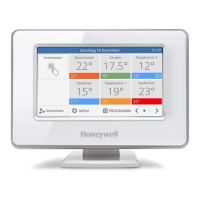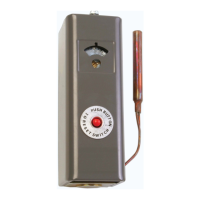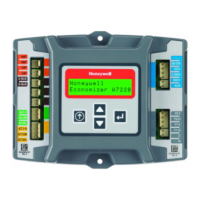31
Page 31
Mini-AT User Guide
Communicating to the Mini-AT with a Modem
The Mini-AT has two serial ports. Typically, serial connection J6 will be used for local connections
and TB2 will be used for modem connections. The serial ports are mutually exclusive, meaning only
one can be used at any given time. However, the baud rates can be independently selected for each
port. Use Item Code 126 to set the baud rate for the local port and Item Code 272 to set the baud rate
for the modem port.
The Mini-AT
is shipped with a jumper across two pins of JB900 (located in the top, central portion of the main
board). The jumper must be on pins 2 and 3 to enable modem communications through terminal strip TB2
(see Table 4). See figures 10 and 11 on page 33 for power and RS-232 connections when an internal
modem is installed.
Automatic Call-In Feature
The Mini-AT has the capability to initiate a modem to modem telephone call. This can happen under two
circumstances. The first of these is an Alarm Call-In, and the second is a Scheduled Call-In.
The Alarm Call-in feature can be configured to call in one of two ways.
The first is by using an alarm pulse to
trigger the automatic call-in feature of a Mercury Modem.
When an alarm condition is detected, the Mini-A
T
will generate an alarm pulse. The
Alarm Call-In feature is designed to be used with Mercury Instruments
Alarm-Link Software.
To use this method, set the following items:
333 Call-in Trigger 1 - Alarm Call-in only
486 Modem AT Enable 0 - Call-in via Alarm Pulse
Note: The Mercury Modem has to be configured properly to use this method. Refer to the
Installation Guide for the Mercury Modem for more information.
The second Alarm Call-In method is accomplished by sending Hayes AT
-type commands out the serial port to
a generic-type modem, such as the Messenger Modem. In this method, the Mini-AT firmware takes control of
all call-related functions including call retry
. During an alarm call in in this method, the LCD displays “LEvvvvvv”
to let the user know that a call-in is being attempted.
To use this method, set the following items:
333 Call-in Trigger 1 - Alarm Call-in Only
486 Modem AT Enable 1 - Call-in via AT commands
491 Modem Init String Initialization command of the modem
Default = &F
492 Modem Dial String Command sent to initiate dialing
Default = ATDT
493 Alarm Call-In Phone # Phone number to call for alarm
494 Modem Hang-up String Command sent to modem for hang-up
Default = ATH
495 Modem Retry Interval A Time to wait for a retry if first call fails
Default = 5 (value is in minutes)
496 Modem Retry Interval B Time to wait for a retry if all calls fail
Default = 1440 (value is in minutes)

